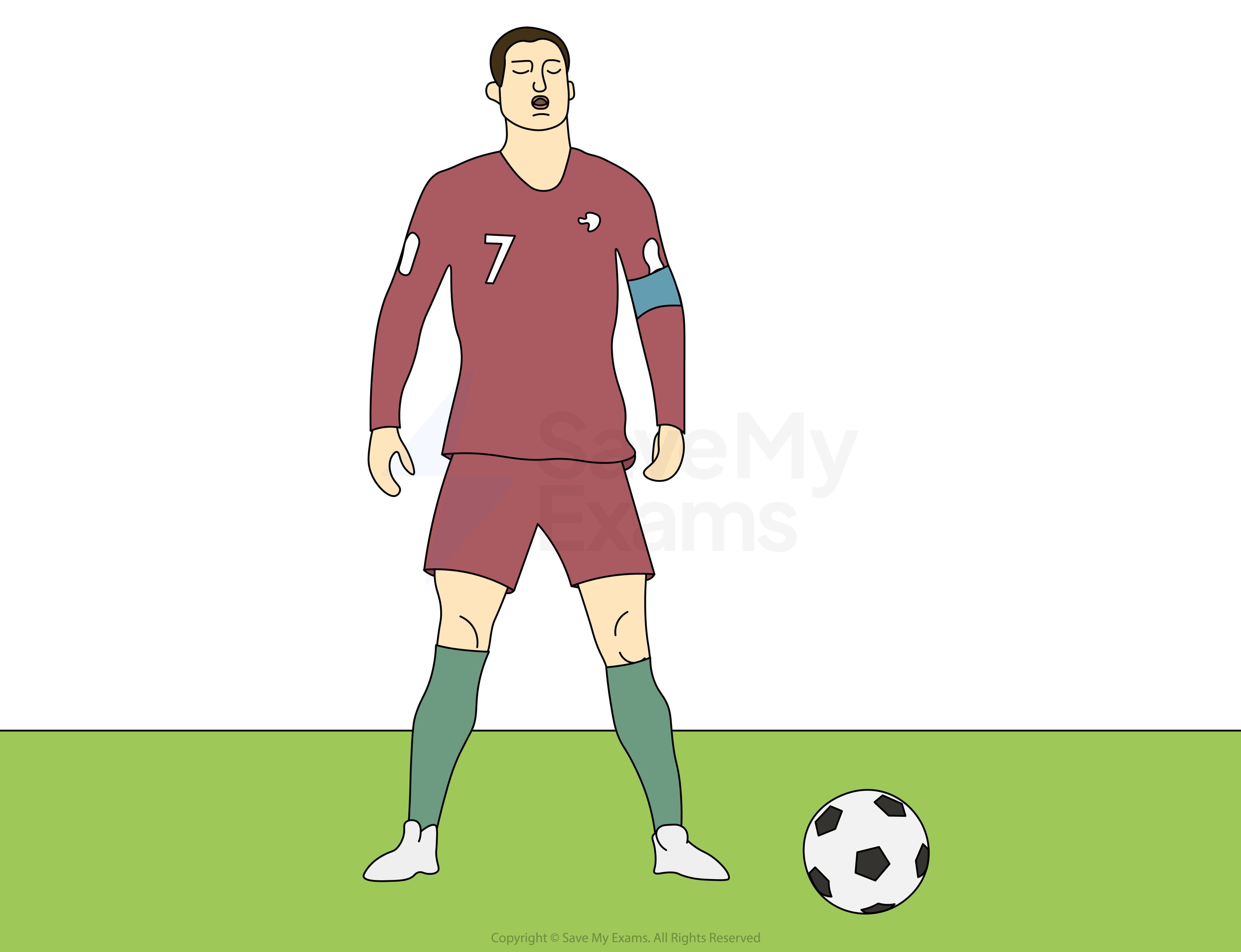Controlling Arousal for Performance in Sport (AQA GCSE Physical Education (PE)): Revision Note
Exam code: 8582
Controlling Arousal for Performance in Sport
Arousal levels can be controlled using stress management techniques
These techniques can be carried out before or during a sporting performance
Techniques include deep breathing, mental rehearsal, visualisation or imagery, and positive self-talk
Deep breathing
Deep breathing is a physical body (somatic) technique
Participants would deliberately take longer, controlled breaths in and out:
The body should be relaxed and relatively still
The lungs should be filled with air during ventilation using a slow and controlled inhalation of breath
The exhale should be controlled and slow to release air from the lungs
This should be repeated several times to focus the mind and reach optimal arousal levels
A footballer may do this before taking a penalty
Diagram of deep breathing

A football player may do deep breathing before taking a penalty
Mental rehearsal/visualisation/imagery
Mental rehearsal, visualisation and imagery are techniques of the mind (mental)
Mental rehearsal may involve a participant visualising themselves performing a skill perfectly before they attempt it, such as shooting a free throw in basketball, which can help lower arousal to optimal levels
Visualisation and imagery also involve the participant picturing themselves in a safe calm place, this can help control arousal levels
Positive self-talk
Self-talk is another mental technique to help optimise arousal levels
Participants talk to themselves, usually in their heads, with positive affirmations such as "You are well prepared for this" or "You can win this race"
An example is a snooker player telling themselves they "can make the shot" to help lower arousal levels when nervous or anxious

Unlock more, it's free!
Did this page help you?